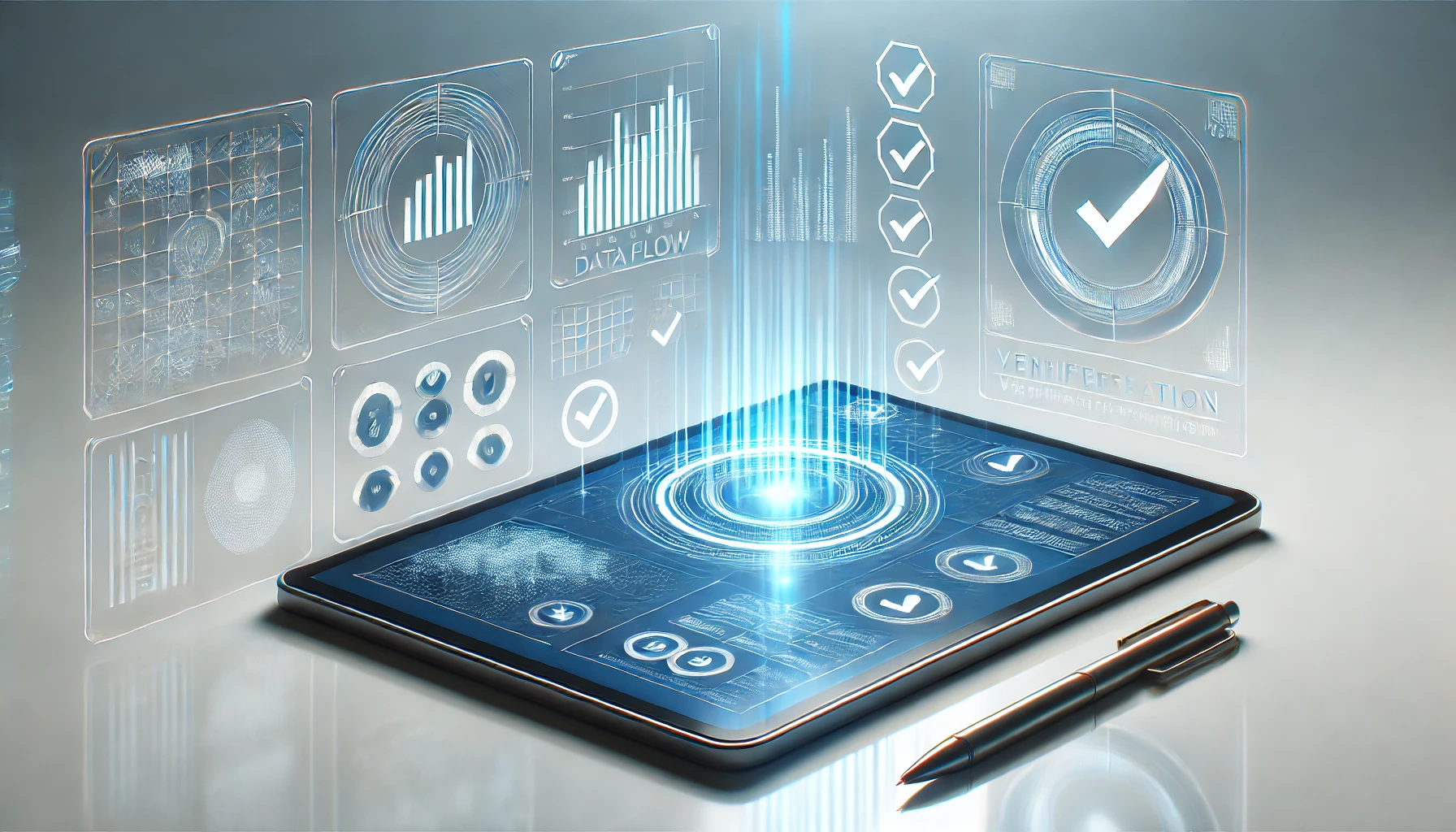In a world where data accuracy is paramount, technology emerges as a reliable ally in the realm of verification. The ability of technology to streamline processes and enhance security in data verification is undeniable. From automated tools that swiftly analyze vast datasets to real-time verification solutions that provide instant validation, the possibilities seem endless. But how exactly do these advancements impact the reliability and integrity of the verification process? Let’s explore how technology help in data verification.
Automated Verification
Automated verification plays a crucial role in streamlining data verification processes by utilizing algorithms and software to efficiently assess and validate data accuracy. Machine learning verification algorithms are designed to learn from data patterns and make predictions or decisions without being explicitly programmed. By leveraging machine learning techniques, automated verification systems can continuously improve their accuracy and effectiveness over time.
These systems analyze large datasets at high speeds, quickly identifying discrepancies or errors that may go unnoticed through manual verification processes. Through the use of predefined rules and algorithms, automated verification ensures consistency and reliability in assessing data accuracy across various sources.
Moreover, automated verification minimizes the risk of human error, enhances operational efficiency, and reduces the time required for data validation tasks. By automating repetitive verification processes, organizations can allocate resources more effectively, focus on higher-value tasks, and make data-driven decisions with confidence. In essence, automated verification is a powerful tool for ensuring data accuracy and integrity in today’s fast-paced digital landscape.
Real-time Verification
In the realm of data verification, real-time verification stands as a critical component for organizations seeking to maintain up-to-the-minute accuracy in their datasets. Real-time verification ensures that data is continuously validated as it is entered or updated, enhancing the reliability and relevance of information. This instantaneous validation process offers several advantages:
- Instant Validation: Real-time verification allows for immediate validation of data, minimizing the risk of errors and ensuring data accuracy from the outset.
- Online Verification: By conducting verification checks online in real-time, organizations can access up-to-date information and verify data against current databases or sources.
- Enhanced Data Integrity: Real-time verification helps organizations maintain the integrity of their datasets by flagging inconsistencies or inaccuracies as soon as they occur.
- Timely Decision-Making: With real-time verification, organizations can make quick and informed decisions based on accurate and reliable data, driving efficiency and productivity.
Real-time verification is a pivotal tool in ensuring that organizations operate with precise and dependable data at all times.
AI-based Verification
AI-based Verification is a cutting-edge approach that leverages artificial intelligence algorithms to verify data efficiently and accurately. Through AI, automated data authentication processes can swiftly analyze vast amounts of information, identifying patterns and anomalies with high precision. This technology not only streamlines verification tasks but also enhances data security by detecting potential errors or fraudulent activities promptly.
AI in Verification
Leveraging advanced algorithms and machine learning, technology has revolutionized the process of verification, allowing for unprecedented efficiency and accuracy in confirming the authenticity and integrity of data.
- Enhanced Facial Recognition: AI-powered systems can analyze facial features to verify identities, making it harder for unauthorized individuals to access sensitive information.
- Pattern Recognition: Machine learning algorithms excel at identifying patterns within data, aiding in the detection of anomalies or inconsistencies that may indicate fraudulent activity.
- Real-time Verification: AI can swiftly verify vast amounts of data in real-time, ensuring that decisions are based on the most up-to-date and accurate information available.
- Continuous Learning: Through machine learning, verification systems can adapt and improve over time, becoming more effective at detecting new types of fraud or errors.
Automated Data Authentication
Utilizing cutting-edge artificial intelligence technology, automated data authentication represents a significant advancement in the realm of verification processes. This technology plays a crucial role in fraud prevention and identity verification by efficiently analyzing vast amounts of data to ensure its accuracy and authenticity. Automated data authentication systems can flag discrepancies, anomalies, or inconsistencies in data sets, which helps in detecting potential fraudulent activities or inaccuracies in identity verification processes.
Blockchain Verification
Blockchain verification offers unparalleled transparency by providing a decentralized ledger accessible to all participants. This technology ensures immutable verification of data, safeguarding against tampering or unauthorized alterations. The inherent characteristics of blockchain make it a robust solution for maintaining the integrity and authenticity of information in various industries.
Transparency in Blockchain Verification
With the increasing need for secure and transparent record-keeping systems, the integration of blockchain technology has revolutionized data verification processes. Blockchain ensures transparency in data verification by providing a decentralized and immutable ledger where transactions are securely recorded. Here are four key aspects highlighting the significance of transparency in blockchain verification:
- Decentralization: Blockchain operates on a decentralized network, removing the need for a central authority to oversee transactions. This decentralization enhances transparency as all network participants have equal access to verify data.
- Public Ledger: The information stored on a blockchain is visible to all network participants, promoting transparency in data verification. Any alterations made to the data can be easily identified and traced back to the source.
- Smart Contracts: Through self-executing smart contracts, blockchain automates verification processes based on predefined conditions. This automation increases transparency by ensuring that verification is carried out consistently and without bias.
- Immutable Records: Once data is added to a blockchain, it cannot be altered or deleted, ensuring the integrity and transparency of the verification process. This immutability provides a reliable audit trail for verifying data authenticity.
Immutable Data Verification
In the realm of data verification, ensuring immutability is paramount for establishing trust and reliability in transactions. Immutable data verification, often powered by blockchain technology, plays a critical role in securing data and preventing fraud. By leveraging blockchain’s decentralized and tamper-proof nature, organizations can create a transparent and unchangeable record of transactions. This secure data verification method guarantees that once information is recorded on the blockchain, it cannot be altered or deleted, ensuring the integrity and authenticity of the data.
Blockchain verification offers a robust solution for fraud prevention by providing a secure and verifiable way to track and verify transactions in real-time. The immutability of blockchain data ensures that any attempts to manipulate or falsify information are immediately detected, making it a powerful tool for maintaining the accuracy and trustworthiness of records. By embracing immutable data verification through blockchain technology, businesses can enhance their data security measures and build a more reliable foundation for their transactions.
Cloud-based Verification
Utilizing cloud-based verification services offers a streamlined approach to ensuring data accuracy and integrity. When considering remote identity verification and fraud prevention, cloud-based solutions can significantly enhance the verification process. Here are four key benefits of using cloud-based verification methods:
- Scalability: Cloud-based verification services can easily scale up or down based on the volume of verifications required. This flexibility ensures that organizations can adapt to changing verification needs efficiently.
- Real-time Updates: Cloud-based systems provide real-time updates on verification statuses, allowing for immediate actions to be taken if any discrepancies are detected. This helps in maintaining the accuracy and timeliness of data verification processes.
- Accessibility: With cloud-based verification, authorized users can access the system from anywhere with an internet connection. This accessibility promotes seamless collaboration and quick decision-making processes.
- Enhanced Security: Cloud-based verification services often come with advanced security features such as encryption protocols and regular security updates. These measures help in safeguarding sensitive data during the verification process.
Biometric Verification
Biometric verification stands as a robust method for confirming individuals’ identities through unique physical or behavioral characteristics. This advanced technology offers a high level of security and accuracy in data verification processes. Facial recognition, a form of biometric verification, analyzes facial features to authenticate individuals. By capturing and comparing facial patterns, this technology provides a reliable way to verify identities. Fingerprint scanning is another widely used biometric method that identifies individuals based on their unique fingerprint patterns. This technique offers a secure and efficient way to validate identities, as fingerprints are distinctive to each person.
Biometric verification enhances data security by adding an extra layer of protection that is difficult to replicate or falsify. The use of biometric identifiers minimizes the risk of unauthorized access and identity theft. Implementing biometric technology in data verification processes can streamline authentication procedures and improve overall accuracy. By utilizing facial recognition and fingerprint scanning, organizations can ensure that only authorized individuals gain access to sensitive information, safeguarding data integrity and confidentiality.
Frequently Asked Questions
How Can Data Verification Technology Protect Against Cyber Threats?
You might think data verification tech is just checking boxes, but it’s your shield against cyber threats. It stops identity theft by confirming who’s who and blocks phishing attacks before they strike.
Are There Any Privacy Concerns With Using Biometric Verification?
Privacy implications arise with biometric security due to concerns over data collection and potential misuse. Biometric verification technology, while enhancing security, may raise issues of consent and data protection. Users should stay informed and vigilant.
Can Blockchain Verification Prevent Data Tampering and Fraud?
Blockchain verification offers robust fraud prevention by securing data through transparent, decentralized ledgers. Its tampering detection capabilities ensure data integrity. By leveraging cryptographic principles, blockchain technology provides a trustworthy solution to combat data manipulation and unauthorized access.
What Are the Limitations of Cloud-Based Verification Systems?
When considering verification accuracy, it’s crucial to evaluate the limitations of cloud-based systems. Cloud security vulnerabilities can impact data integrity, potentially affecting verification processes. Understanding these drawbacks is essential for maintaining reliable data verification practices.
How Accurate Is Ai-Based Verification Compared to Human Verification?
Imagine AI as a diligent apprentice, striving for perfection. While it offers efficiency, ethical implications arise from its lack of empathy. Trust issues surface due to potential biases. Human verification still holds the gold standard.



